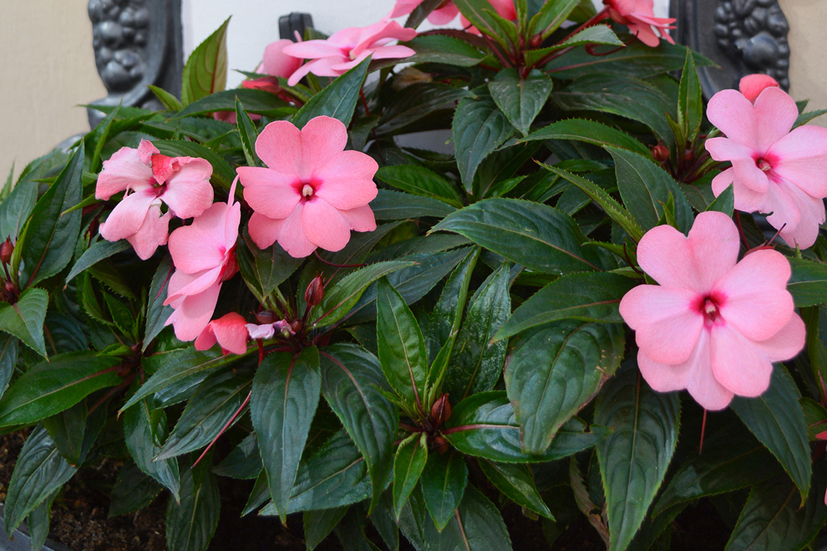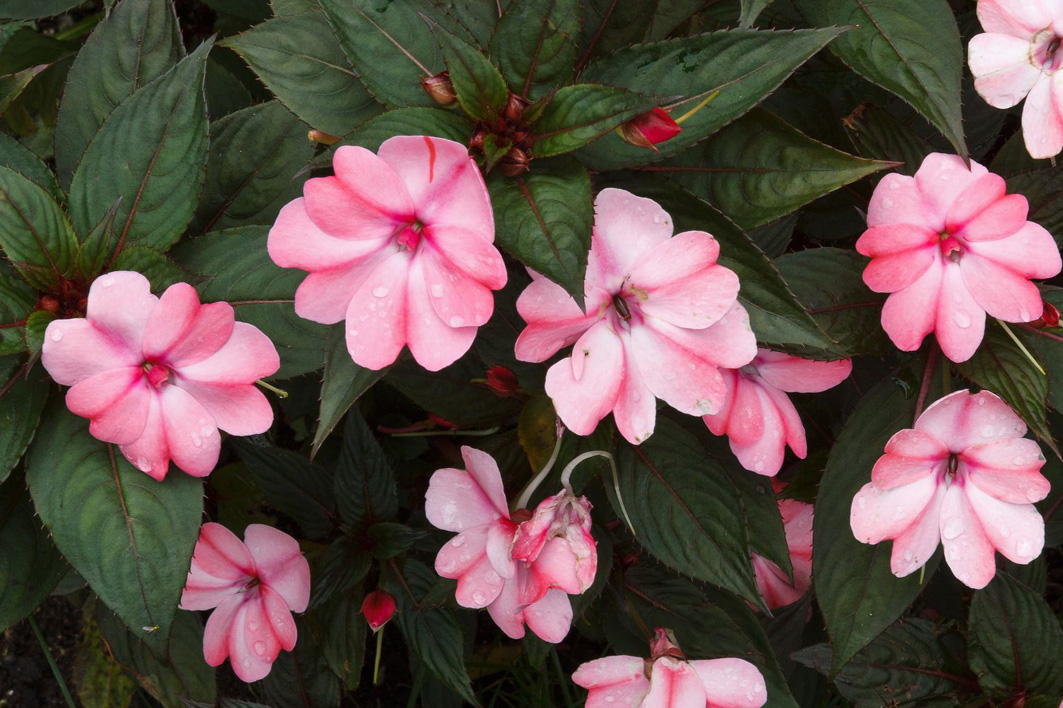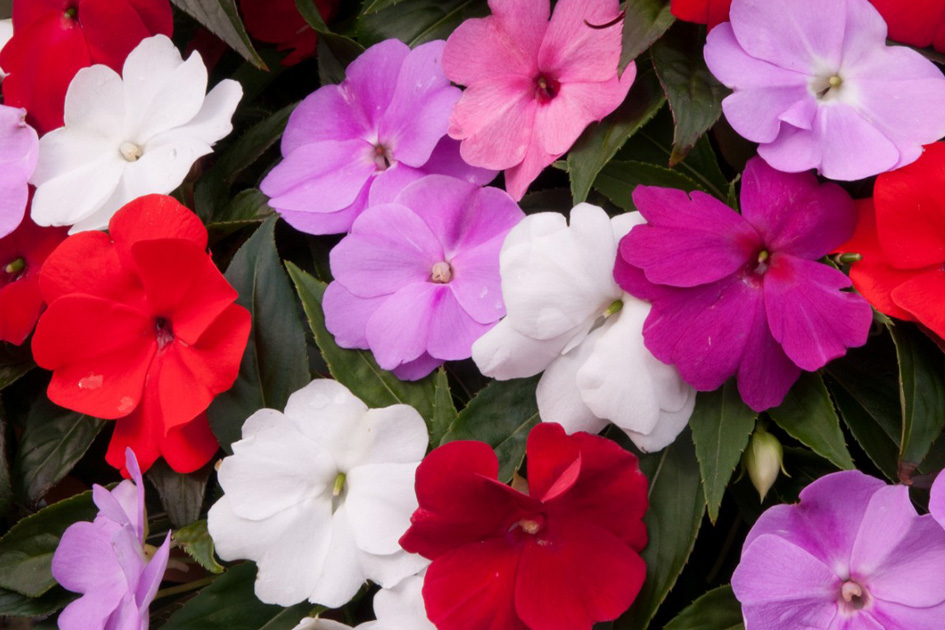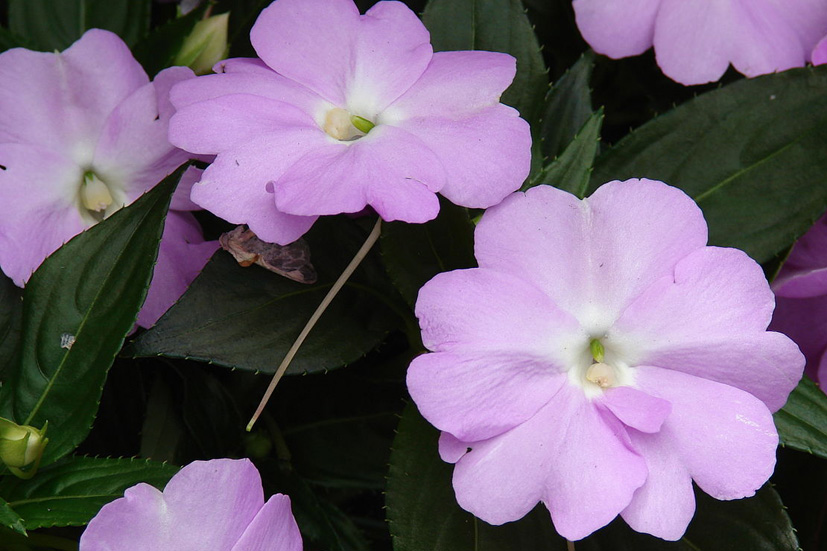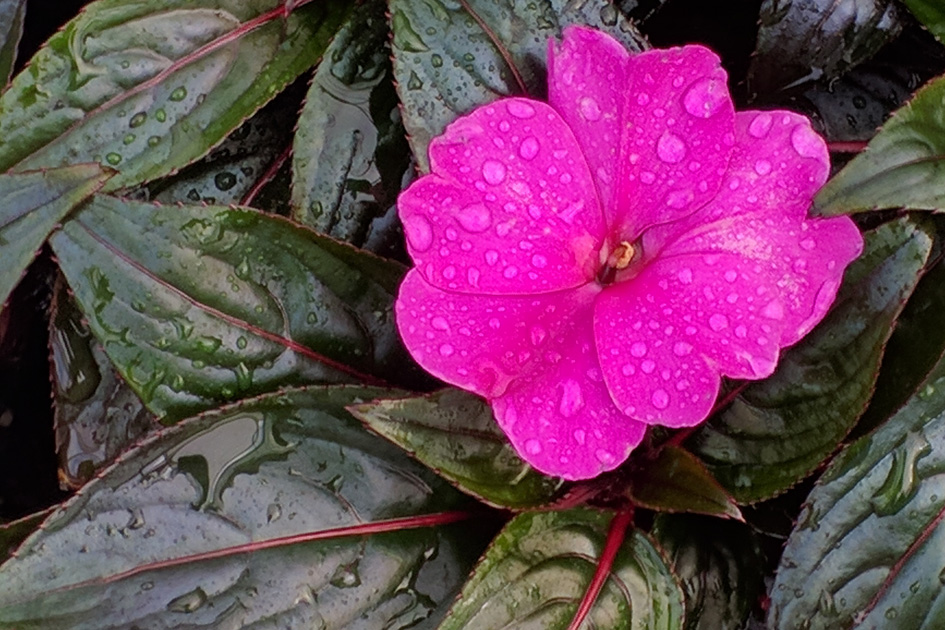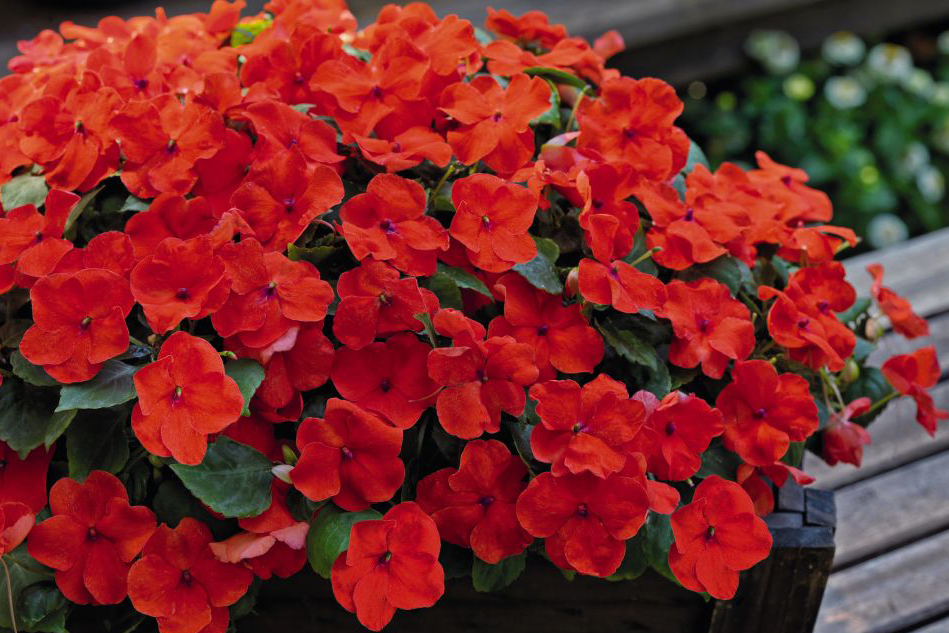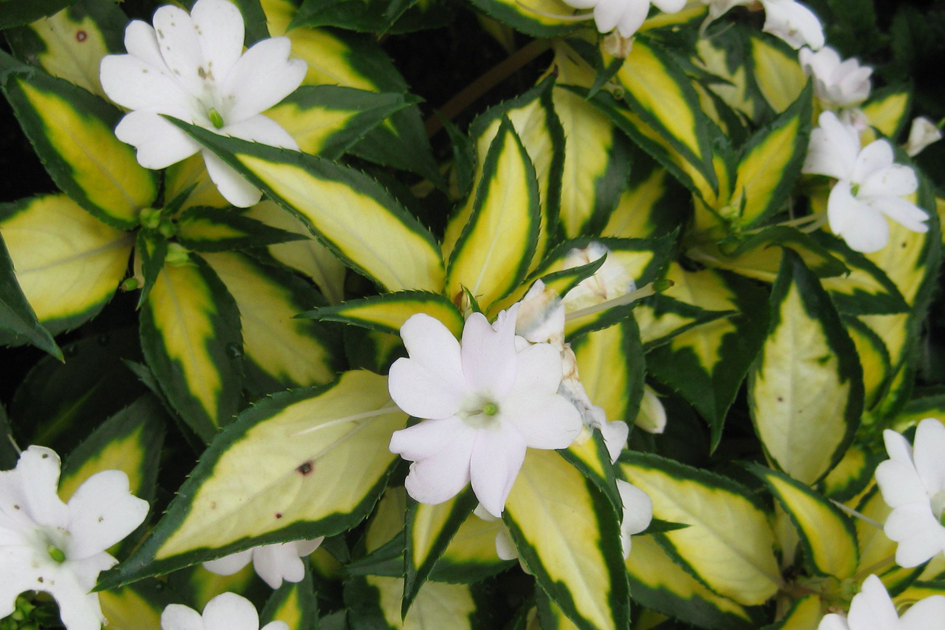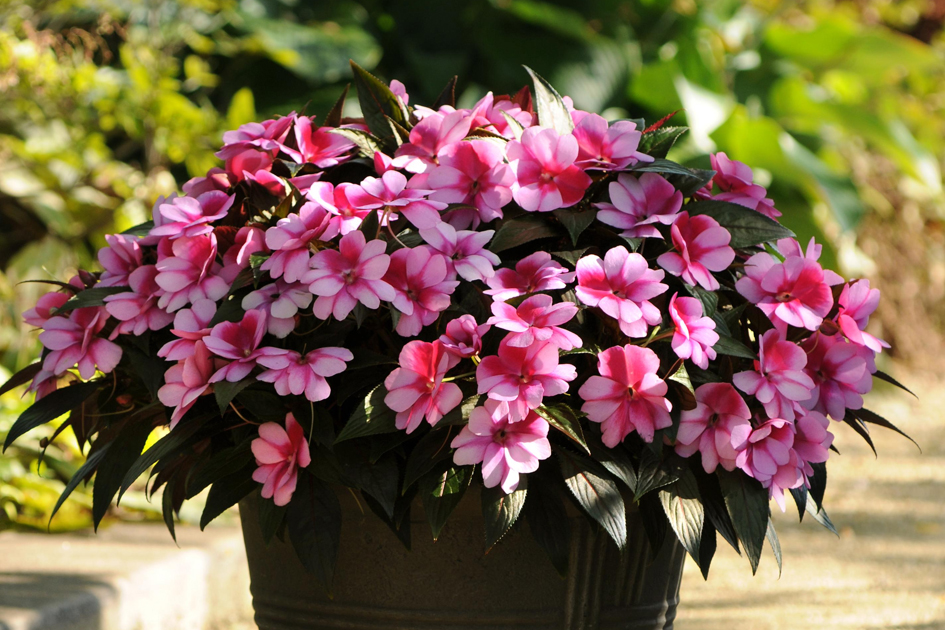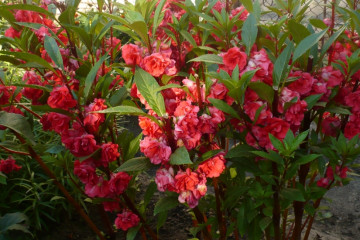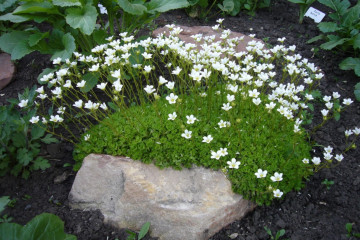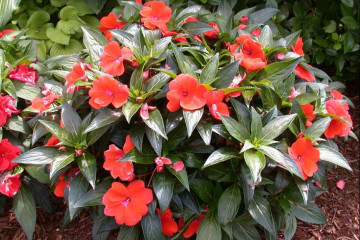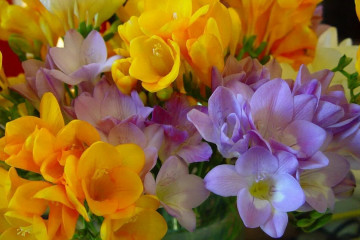Balsam New Guinea - growing at home and in the garden
Content:
An indoor plant that can bloom all year round is a special joy for the grower. It is this ability that New Guinea balsam has. The variety appeared relatively recently, but has already won worldwide fame and love. The most decorative varieties, features of care and reproduction of New Guinea balsam - all this will be of interest to those who decide to purchase and grow this wonderful flower.
Balsam New Guinea
The extensive Balsaminov family was replenished with a new variety in 1972. For crossing, another type of balsam was used - Hawker's balsam. It was this variety that became the basis for breeders when developing a New Guinea hybrid. In some sources, it can be found under the name New Zealand balsam.
It is very difficult to give a general description to a New Guinean, because the varieties are very different from each other in the color of not only flowers, but also leaves. Common features include:
- density and fleshiness of leaves and shoots;
- rounded inflorescences;
- the velvety surface of the petals;
- lanceolate and serrated leaf edge.
The color of the leaf plate can be dark green or have a bronze tint, and there are variegated varieties. Almost all colors are present in the color of flowers - from red and burgundy to fuchsia and peach.
Popular varieties
There are many varieties of New Guinea balsam, but some are particularly decorative. Since the work on selection is very active, not even specific varieties are distinguished, but varietal groups. They have common features, but may differ in color.
- Divaro
Representatives of the variety are distinguished by the compactness of the bush, the rich green color of the leaf plate and the small size of the flowers.
- Macarena
A distinctive feature of the variety is an orange or salmon shade of flowers. They look especially decorative against the background of green foliage with a touch of bronze.
- Rainforest exotic
The color of flowers is always bright shades, the foliage is dark green. There are specimens with two-color petals.
- Devine mix
All representatives of the varietal group are distinguished by a compact bush shape. Refers to large-flowered varieties. The petals can be of different colors.
- Jangle rain
Only gentle pastel colors are present in the color of the flowers. The leaf plate is glossy, dark green.
Harmony
The main feature is the reddish tint of the leaf blade in some species. The flowers are round and small in size.
- Mini Gini
The small size of the flowers of the variety fully compensates for their number. A compact bush during flowering is almost completely covered with them.
- Spreading White
The original variegated variety. The flowers are snow-white in color and have an average petal size.
Home and outdoor care
All members of the family are considered to be very capricious plants. They are demanding in terms of care and growing conditions. But you should not immediately abandon the idea of planting balsam, because you just have to adhere to certain rules and a beautiful flowering plant will decorate the house or garden.
Caring for indoor balsam
The rules for the care and maintenance of New Guinea balsam are no different from the standard growing technology for other representatives of this family. The basic requirements are presented in the table below.
| Illumination | Diffused intense lighting, long daylight hours. Artificial supplementary lighting is desirable. |
| Temperature regime | Refers to heat-loving plants. The optimum growing temperature is +22 .. + 25 ° С. A short-term decrease of 2-3 degrees is permissible. |
| Watering and humidity | Frequent but moderate soil moisture. Drying of the soil by 1-2 cm is permissible. The moisture level is at least 50%. |
| Top dressing | They are used all year round with a frequency of once every 1-2 weeks. As a fertilizer, preparations are used for flowering indoor plants. |
| Pot size | The volume of the pot should be 1.2 times the size of the root system. As the roots grow, it is required to change the size of the container (1-2 times a year). |
| Pruning and replanting | It does not need pruning and shaping. The transplant is carried out in the same way as for other indoor flowers. The optimal time is mid-spring or early autumn. |
| Winter care | Due to the absence of a pronounced dormant period, caring for Guinean balsam in winter is identical to year-round. |
| Soil composition | Prefers loose nutritious soil. You can use a ready-made commercial substrate and add vermiculite or expanded clay chips to it. |
As you can see from the table, home care for New Guinea balsam is not particularly difficult. All grooming techniques are well known to flower growers, and to create comfortable conditions, you just need to choose the right place for the flower.
Outdoor care
It is possible to grow guinea balsam as a garden flower only as an annual crop. Requirements for lighting, watering schedule and fertilizing remain the same as when growing a flower in a room.
Blooming New Guinea in a flower bed begins in May and ends in September.
Experienced gardeners most often use the same plants to decorate flower beds and decorate apartments. Homemade balsam can simply be planted in the open ground for the summer period, and when the temperature drops, put it back in the pot and bring it into the house.
Flowering features
Continuous year-round flowering is exactly what attracts indoor flower lovers. It is this quality that distinguishes the New Guinea variety from other balsams. In winter, the plant continues to grow and bloom, rather than falling into a dormant state.
The shape of flowers in different varieties is almost identical - they consist of several rounded petals, which converge at the base to the core. The color depends on the variety and can be either one-color or two-color.
Breeding features
New Guinea Balsam can be propagated in 2 ways:
- Sowing seeds followed by picking. The method is rather painstaking and lengthy, therefore it is used in extreme cases.
- Cuttings. The most optimal method. Shoot tips with 2-3 buds are used as cuttings. The lower leaves are removed, planted in a damp substrate and sheltered. Further care - watering, airing the greenhouse and maintaining the temperature +23 .. + 25 ° С.
It will not be difficult to get a new copy of balsam.
Growing problems, diseases and pests
The condition of the plant can deteriorate both from improper care and from the attack of pests.New Guineans are especially prone to root rot, so the watering schedule should be followed very carefully.
Indoors, the flower is susceptible to attack by ticks and thrips, and outdoors - by aphids. At the first sign of parasite infestation, insecticide spraying should be carried out.
Balsam New Guinea - one of the novelties of indoor floriculture, which has already fallen in love with both amateurs and professionals. It is necessary to care for the flower carefully, and it is also worth paying special attention to its placement. Subject to all the rules and recommendations, the New Guinean will be decorated with flowers all year round.

